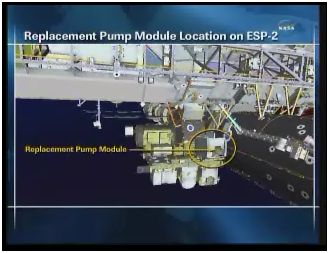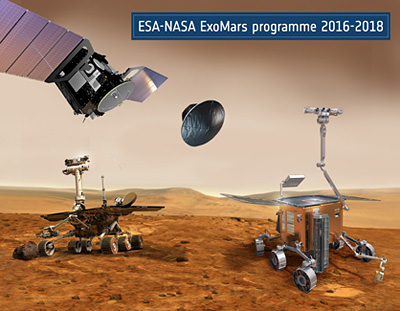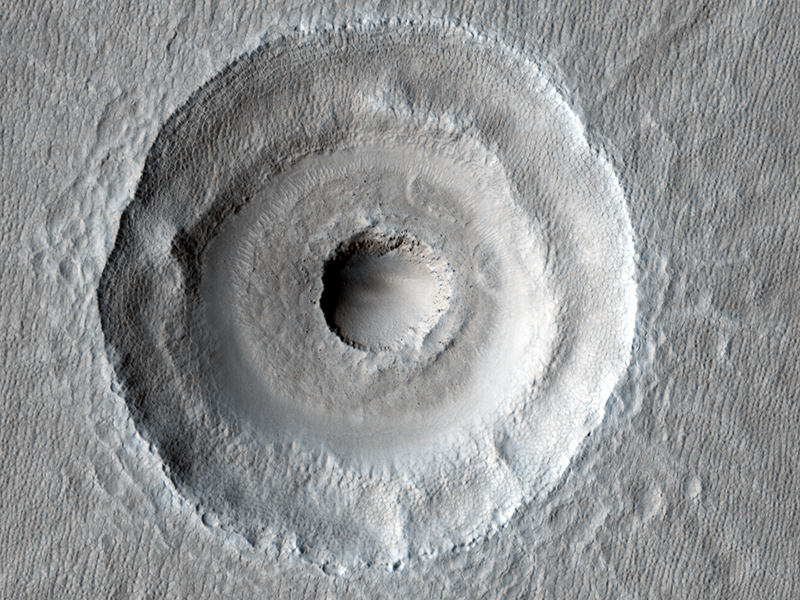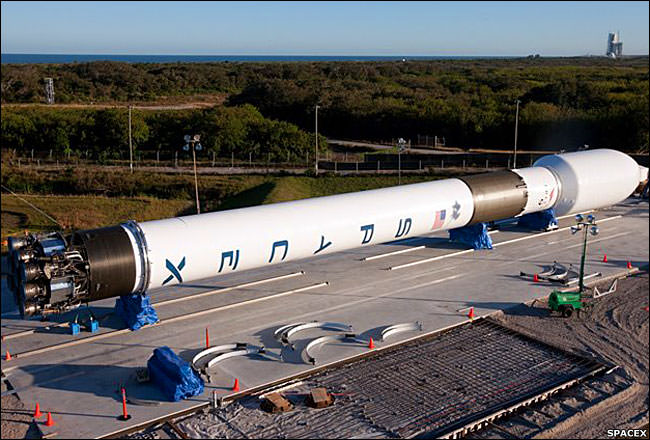Finally, some excitement from the Sun! On August 1, 2010, the entire Earth-facing side of the sun erupted with all sorts of activity. There was a C3-class solar flare, a solar tsunami, multiple filaments of magnetism lifting off the stellar surface, large-scale shaking of the solar corona, radio bursts, a coronal mass ejection (CME) and more. (Watch the movie from the Solar Dynamics Observatory spacecraft for all the action!) As I write this, the solar storm is beginning to reach Earth with one, and possibly two CMEs, according to Spaceweather.com. You can actually watch realtime data coming in from two of the GOES satellites at this link from NOAA’s Space Weather Prediction Center, which measures proton flux in the space environment around Earth. The page refreshes every 5 minutes.
Continue reading “Aurora Alert! Solar Storm Reaches Earth”
NASA Schedules Two “Emergency” EVA’s to Fix Cooling System
[/caption]
*Updated at 11 pm CDT — dates have changed for EVAs.
Two spacewalks will be required to remove and replace a pump on a critical cooling system on the International Space Station, and NASA is hoping to have station astronauts and ground teams ready by Thursday, August 5 Friday, August 6 for the first EVA. The pump module failed over the weekend, prompting a shift to a backup system, while other systems were shut down as a precaution. The backup system is working perfectly, and having a second system failure is highly unlikely, but NASA does not like to operate on a “single-string” system without redundancy. “Having another failure would be a serious situation for the program that we want to avoid,” said ISS program manager Mike Suffredini.
Update:
NASA had originally scheduled the first EVA for Thursday, August 5 and the second for Sunday, but decided late Monday that they needed more time for both astronauts and ground crews to prepare. Now, the first spacewalk will be Friday morning, starting at 6:55 a.m. EDT, (1155 GMT) with the second EVA on Monday, August 9.
An EVA was already scheduled for August 5 for astronauts Doug Wheelock and Tracy Caldwell Dyson to install part of a robotic crane and to prepare for a new module due to arrive in November aboard space shuttle Discovery. But that work will be postponed in order for the astronauts to do the priority fix.
“Typically, we allow two weeks to prepare for this type of EVA, but we decided to take advantage of having an EVA already scheduled, so this is a very aggressive approach,” said Flight Director Courtenay McMillan, who is leading the team supporting the spacewalk.
This type of EVA is part of what is called the “Big 14” set of contingency spacewalks that all ISS astronauts train for in the event of system failures like the one that happened on Saturday.
Suffredini said he is confident everyone can be ready. “The crew is in great spirits and are ready to do this,” he said. “These Big 14 EVA’s cover major systems repairs that an increment crew might have to do without the shuttle there. They train for both specific and generic spacewalks, and this particular one they have trained for. So they have some familiarity with the tasks they will be asked to do.”
Additionally all the operations teams have been working around the clock to prepare for the fix. “The ops team is full up for support,” Suffredini said. “If you were to go in the control room, it looks more like a shuttle flight is going on right now. We do train for these kinds of anomalies, and have been fortunate that we haven’t had to deal with anything like this before, but we have good plans in place.”
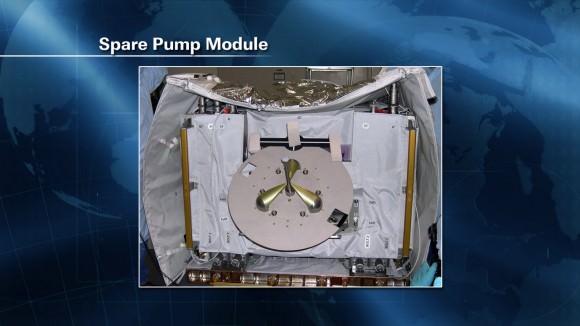
The pump — which was installed in October 2002 — failed Saturday night after a spike in electrical current tripped a circuit breaker. When the 350 kg (780-pound) pump failed, it shut down half of the station’s cooling system. Efforts to restart the pump, which feeds ammonia coolant into the cooling loops to maintain the proper temperature for the station’s electrical systems and avionics, were not successful. Suffredini said data suggests the motor is not frozen, as it did begin to pump when they did the restart, so that tells them there is likely a short in the electrical system.
The station’s crew worked with Mission Control to put the station in a stable configuration. The crew, which is in no danger, has resumed normal work activities and most of the systems are up and running. One freezer was shut down, but frozen specimens which are to be returned to Earth were transferred to another freezer.
McMillan said astronauts Cady Coleman and Sunny Williams are working today in the Neutral Buoyancy Lab — the big pool where astronauts train for EVAs — doing development runs for the emergency EVAs.
“They are doing the tasks that they forsee we’ll need to do, trying to work out details of the timeline,” she said. “And depending on how things go today we’ll see if we’ll be ready for the EVA.”
There are spare pump modules already on board the station, and Suffredini said that if more modules are needed, they can fit on board the Japanese HTV resupply vehicles or SpaceX’s cargo vehicle, and don’t need to be brought up by the space shuttle.
Instruments Chosen for Joint ESA/NASA Mission to Mars
[/caption]
From a NASA press release:
NASA and the European Space Agency (ESA) are working on a joint program to explore Mars in the coming decades and announced today they have selected five science instruments for the first mission. The ExoMars Trace Gas Orbiter, scheduled to launch in 2016, is the first of three joint robotic missions to the Red Planet. It will study the chemical makeup of the Martian atmosphere with a 1000-fold increase in sensitivity over previous Mars orbiters. The mission will focus on trace gases, including methane, which could be potentially geochemical or biological in origin and be indicators for the existence of life on Mars. The mission also will serve as an additional communications relay for Mars surface missions beginning in 2018.
“Independently, NASA and ESA have made amazing discoveries up to this point,” said Ed Weiler, associate administrator of NASA’s Science Mission Directorate in Washington. “Working together, we’ll reduce duplication of effort, expand our capabilities and see results neither ever could have achieved alone.”
The selection of the instruments begins the first phase of the new NASA-ESA alliance for future ventures to Mars. The instruments and the principal investigators are:
— Mars Atmosphere Trace Molecule Occultation Spectrometer — A spectrometer designed to detect very low concentrations of the molecular components of the Martian atmosphere: Paul Wennberg, California Institute of Technology, Pasadena Calif.
— High Resolution Solar Occultation and Nadir Spectrometer — A spectrometer designed to detect traces of the components of the Martian atmosphere and to map where they are on the surface: Ann C. Vandaele, Belgian Institute for Space Aeronomy, Brussels, Belgium.
— ExoMars Climate Sounder — An infrared radiometer that provides daily global data on dust, water vapor and other materials to provide the context for data analysis from the spectrometers: John Schofield, NASA’s Jet Propulsion Laboratory (JPL), Pasadena, Calif.
— High Resolution Color Stereo Imager — A camera that provides four-color stereo imaging at a resolution of two million pixels over an 8.5 km swath: Alfred McEwen, University of Arizona.
— Mars Atmospheric Global Imaging Experiment — A wide-angle, multi-spectral camera to provide global images of Mars in support of the other instruments: Bruce Cantor, Malin Space Science Systems, San Diego, Calif.
The science teams on all the instruments have broad international participation from Europe and the United States, with important hardware contributions from Canada and Switzerland.
“To fully explore Mars, we want to marshal all the talents we can on Earth,” said David Southwood, ESA director for Science and Robotic Exploration. “Now NASA and ESA are combining forces for the joint ExoMars Trace Gas Orbiter mission. Mapping methane allows us to investigate further that most important of questions: Is Mars a living planet, and if not, can or will it become so in the future?”
The plan consists of two Mars cooperative missions in 2016 and 2018, and a later joint sample return mission. The 2016 mission features the European-built ExoMars Trace Gas Orbiter, a European-built small lander demonstrator, a primarily-U.S. international science payload, and NASA-provided launch vehicle and communications components. ESA member states will provide additional instrument support.
The 2018 mission consists of a European rover with a drilling capability, a NASA rover capable of caching selected samples for potential future return to Earth, a NASA landing system, and a NASA launch vehicle. These activities are designed to serve as the foundation of a cooperative program to increase science returns and move the agencies toward a joint Mars sample return mission in the 2020s.
Radar Images Reveal Tons of Water Likely at the Lunar Poles
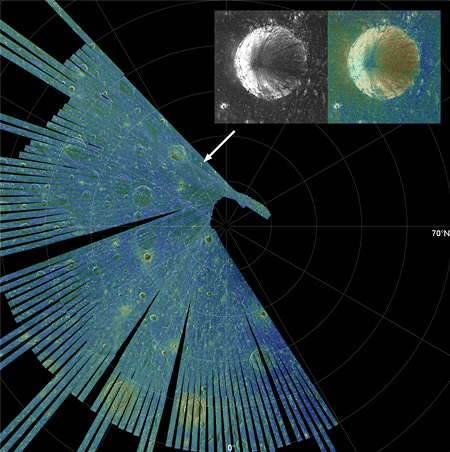
[/caption]
Radar has been used since the 1960s to map the lunar surface, but until recently it has been difficult to get a good look at the Moon’s poles. In 2009, the Mini-SAR radar instrument on the Chandrayaan-1 spacecraft was able to map more than 95% of both poles at 150 meter radar resolution, and now the Mini-RF instrument on the Lunar Reconnaissance Orbiter — which has 10 times the resolution of the Mini-SAR — is about halfway through its first high-resolution mapping campaign of the poles. The two instruments are revealing there are likely massive amounts of water in the permanently shadowed craters at the poles, with over 600 million metric tons at the north pole alone. “If that was turned into rocket fuel, it would be enough to launch the equivalent of one Space Shuttle per day for over 2,000 years,” said Paul Spudis, principal investigator for the Mini-SAR, speaking at the annual Lunar Forum at the Ames Research Center in July.
Both Spudis and Ben Bussey, principal investigator for LRO’s Mini-RF shared images from their respective instruments at the Forum, highlighting polar craters that exhibit unusual radar properties consistent with the presence of ice.
They have found over 40 craters on the Moon’s north pole that exhibit these properties.
Both instruments provide details of the interior of shadowed craters, not able to be seen in visible light. In particular, a measurement called the circular polarization ratio (CPR) shows the characteristics of the radar echoes, which give clues to the nature of the surface materials in dark areas. The instruments send pulses of left-polarized radio waves to measure the surface roughness of the Moon. While smooth surfaces send back a reversed, right-polarized wave, rough areas return left-polarized waves. Ice, which is transparent to radio waves, also sends back left-polarized waves. The instruments measure the ratio of left to right circular polarized power sent back, which is the CPR.
Few places – even in our solar system — have a CPR greater than 1 but such places have thick deposits of ice, such as Martian polar caps, or the icy Galilean satellites. They are also seen in rough, rocky ejecta around fresh, young craters, but there, scientists also observe high CPR outside the crater rim such as in this image, below of the Main L crater on the Moon.

Most of the Moon has low CPR, but dozens of anomalous north pole craters, such as a small 8 km crater within the larger Rozhdestvensky crater, had a high CPR on the inside, with a low CPR on the rims. That suggests some material within the craters, rather than surface roughness, caused the high CPR signal.
“Geologically, we don’t expect rough, fresh surfaces to be present inside a crater rim but absent outside of it,” Spudis said. “This confirms the high CPR in these anomalous craters is not caused by surface roughness, and we interpret this to mean that water ice is present in these craters.”

Additionally, the ice would have to be several meters thick to give this signature. “To see this elevated CPR effect, the ice must have a thickness on the order of tens of wavelengths of the radar used,” he said. “Our radar wavelength is 12.6 cm, therefore we think that the ice must be at least two meters thick and relatively pure.”
Recent Mini-SAR images (top image) from LRO confirm the Chandrayaan-1 data, with even better resolution. The Mini-RF, Bussey said, is equivalent to a combination of the Arecibo Observatory and the Greenbank Radio telescope in looking at the Moon. “Our polar campaign will map from 70 degrees to the poles and so far we are very pleased with the coverage and quality of the data,” Bussey said.
Spudis said they are seeing less anamolous craters on the Moon’s south pole, but both he and Bussey are looking forward to comparing more data between the two radar instruments to learn more about the permanently shadowed craters on the Moon.
Additionally, other instruments on LRO will also provide insights into the makeup of these anomalous craters.
For more information see these NASA web pages:
NASA Radar Finds Ice Deposits at Moon’s North Pole
A Cool Look at a Lunar Crater
Space Station Cooling System Shuts Down
[/caption]
One of the International Space Station’s external cool system pumps quit working late Saturday, likely due to mechanical failure. This triggered subsequent shutdowns in other systems. Teams on the ground are working with the six astronauts on board the station to troubleshoot the issue, but it appears at least two spacewalks will be required to remove and replace the pump. NASA officials said the problem will have to be resolved quickly, as the cooling system is extremely important for all the station’s systems. This is a redundant system, so the backup loop is now cooling the station and the crew is in no danger, but NASA does not like to work any systems “single string,” i.e., with no backup.
NASA tried restarting the pump Sunday morning, but it did not work. There are two spare pumps on orbit. ISS astronauts Doug Wheelock and Tracy Caldwell Dyson had been already scheduled to make a spacewalk on August 5 to install part of a robotic crane and to do preparation work get ready for a new module (the Permanent Logistics Module) that is due to arrive in November aboard space shuttle Discovery.
EVA teams are now looking at using the August 5 space walk for the first half of the repairs, followed by the second EVA on August 7 (Saturday). The spacewalks need special planning since the system is in a reduced power configuration.
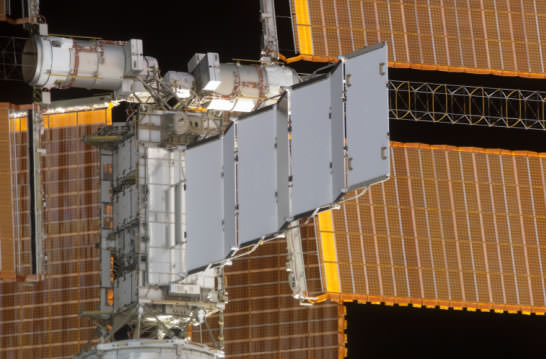
The space station features two independent coolant loops that use ammonia circulating through huge radiators to dissipate the heat generated by the station’s electronic systems, primarily from the labs. Each loop is fed by a large tank of ammonia that includes an internal bellows pressurized by nitrogen. That pressurization system allows the loops to handle the periodic expansion and contraction of the ammonia coolant due to temperature changes when the station goes from sunlight to shadow while in orbit.
Back in April a valve failed on the coolant system, but the teams were able to troubleshoot and fix the problem without a spacewalk.
A status update from NASA listed several other systems that required powerdowns to as a result of the cooling loop shutdown in order to thermally protect them:
Redundant power to four CQs (Crew Quarters), three in Node-2, one in Kibo JPM, with both fans in each CQ remaining functional but zero fault-tolerant (crew is still Go for CQ use). Due to loss of heater power, MBS (Mobile Base System), SSRMS (Space Station Remote Manipulator System), and SPDM (Special Purpose Dexterous Manipulator) are currently zero fault-tolerant. Communications systems, but there could be some issues with possible overheating. No video will be available fromNode-2, Node-3, the Columbus and Japanese modules.
Astronomy Without A Telescope – The Universe Is Not In A Black Hole
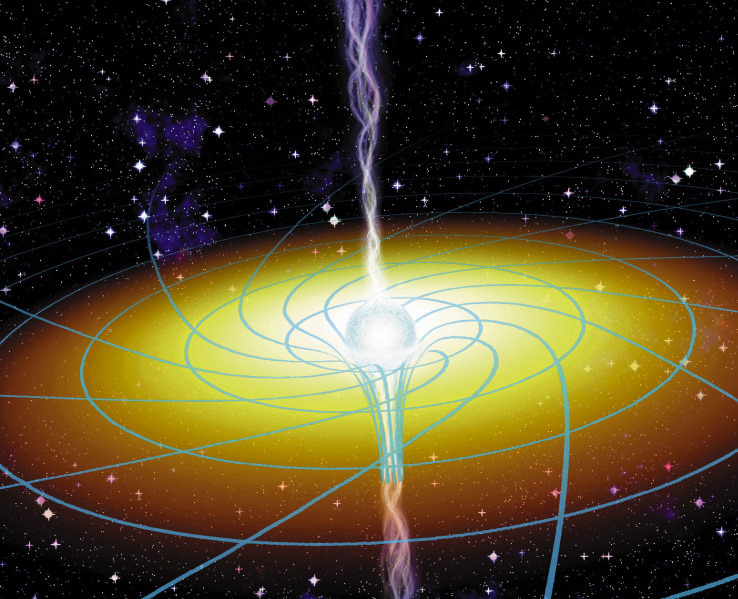
[/caption]
It has been reported that a recent scientific paper delivers the conclusion that our universe resides inside a black hole in another universe. In fact, this isn’t really what the paper concluded – although what the paper did conclude is still a little out of left field.
The Einstein-Cartan-Kibble-Sciama (ECKS) theory of gravity – claimed as an alternative to general relativity theory, although still based on Einstein field equations – seeks to take greater account of the effect of the spin of massive particles. Essentially, while general relativity has it that matter determines how spacetime curves, ECKS also tries to capture the torsion of spacetime, which is a more dynamic idea of curvature – where you have to think in terms of twisting and contortion, rather than just curvature.
Mind you, general relativity is also able to deal with dynamic curvature. ECKS proponents claim that where ECKS departs from general relativity is in situations with very high matter density – such as inside black holes. General relativity suggests that a singularity (with infinite density and zero volume) forms beyond a black hole’s event horizon. This is not a very satisfying result since the contents of black holes do seem to occupy volume – more massive ones have larger diameters than less massive ones – so general relativity may just not be up to the task of dealing with black hole physics.
ECKS theory attempts to step around the singularity problem by proposing that an extreme torsion of spacetime, resulting from the spin of massive particles compressed within a black hole, prevents a singularity from forming. Instead the intense compression increases the intrinsic angular momentum of the matter within (i.e. the spinning skater draws arms in analogy) until a point is reached where spacetime becomes as twisted, or as wound up, as it can get. From that point the tension must be released through an expansion (i.e. an unwinding) of spacetime in a whole new tangential direction – and voila you get a new baby universe.
But the new baby universe can’t be born and expand in the black hole. Remember this is general relativity. From any frame of reference outside the black hole, the events just described cannot sequentially happen. Clocks seem to slow to a standstill as they approach a black hole’s event horizon. It makes no sense for an external observer to imagine that a sequence of events is taking place over time inside a black hole.
Instead, it is proposed that the birth and expansion of new baby universe proceeds along a separate branch of spacetime with the black hole acting as an Einstein-Rosen bridge (i.e. a wormhole).
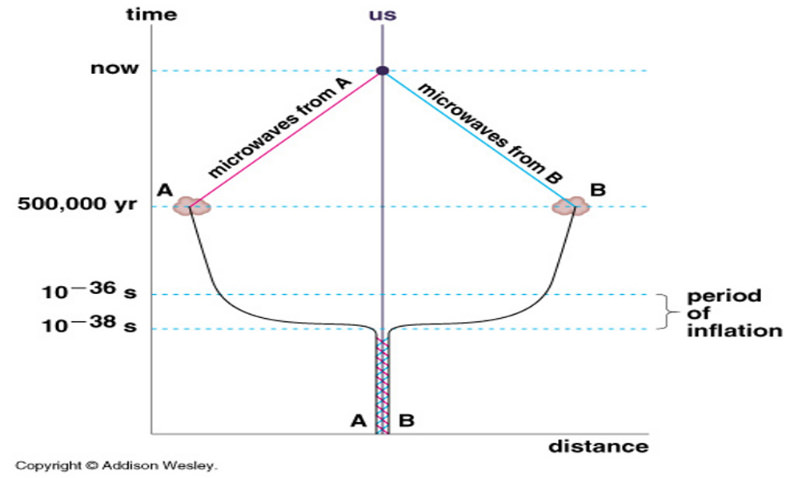
If correct, it’s a turtles on turtles solution and we are left to ponder the mystery of the first primeval universe which first formed the black holes from which all subsequent universes originate.
Something the ECKS hypothesis does manage to do is to provide an explanation for cosmic inflation. Matter and energy crunched within a black hole should achieve a state of isotropy and homogeneity (i.e. no wrinkles) – and when it expands into a new universe through a hypothetical wormhole, this is driven by the unwinding of the spacetime torsion that was built up within the black hole. So you have an explanation for why a universe expands – and why it is so isotropic and homogenous.
Despite there not being the slightest bit of evidence to support it, this does rank as an interesting idea.
Further reading: Poplawski, N.J. (2010) Cosmology with torsion – an alternative to cosmic inflation.
NASA Braces Rover Fans for the Worst About Spirit

[/caption]
JPL issued a press release today with an update that mission controllers have still not heard from the hibernating Spirit rover. Even though the rover is experiencing one of Mars’ harshest winters since the rovers arrived, the rover team has begun an active “paging” technique called ‘sweep and beep’ in an effort to communicate with Spirit instead of just passively listening for any activity from the rover. Based on models of Mars’ weather and its effect on available power, mission managers believe that if Spirit responds, it most likely will be in the next few months. But in a ‘hope for the best, prepare for the worst’ kind of way, the press release added, “However, there is a very distinct possibility Spirit may never respond.”
“It will be the miracle from Mars if our beloved rover phones home,” said Doug McCuistion, director of NASA’s Mars Exploration Program. “It’s never faced this type of severe condition before – this is unknown territory.”
The Martian winter runs from May through November here on Earth, so there’s still a lot of long, dark winter to get through. Spirit has not communicated since March 22, 2010 and is likely in a low-power hibernation mode since the rover was not able to get to a favorable slope for its fourth Martian winter. The low angle of sunlight during these months limits the power generated from the rover’s solar panels. During hibernation, the rover shuts down communications and other activities so available energy can be used to recharge and heat batteries, and to keep the mission clock running.
On July 26, rover engineers began the sweep and beep. “Instead of just listening, we send commands to the rover to respond back to us with a communications beep,” said John Callas, project manager for the rover. “If the rover is awake and hears us, she will send us that beep.”
The earliest date the rover could generate enough power to send a beep to Earth was calculated to be around July 23. However, mission managers don’t anticipate the batteries will charge adequately until late September to mid-October.
So, there is still a lot of time to wait things out. While I don’t think the rover team is giving up on Spirit at all, it appears they want to prepare the rover faithful for the worst.
But I’m going to make a prediction here: not only will Spirit wake up, but the rover driving team will be able to get her out of the sand trap she is stuck in. Just a hunch, but you heard it here and only time will tell if my prediction comes true.
Based on previous Martian winters, the rover team anticipates the increasing haziness in the sky over Spirit will offset longer daylight for the next two months. The amount of solar energy available to Spirit then will increase until the southern Mars summer solstice in March 2011. JPL says that if we haven’t heard from Spirit by March, 2011 it is unlikely that we will ever hear from it.
Leave it to Steve Squyres, however, principal investigator for the rovers, to leave us with a little hope: “This has been a long winter for Spirit, and a long wait for us,” he said. “Even if we never heard from Spirit again, I think her scientific legacy would be secure. But we’re hopeful we will hear from her, and we’re eager to get back to doing science with two rovers again.”
Source: JPL
Bulls-Eye on Mars and, Apparently, an Industrial Complex
[/caption]
Here’s some doses of coolness and craziness for your Friday. This top image is one of the latest from the HiRISE camera on the Mars Reconnaissance Orbiter, and shows what looks like a target on the Red Planet. Researchers from the HiRISE team aren’t sure yet whether this is two impacts — one impact that occurred dead center within another — or just unusual subsurface layering within one impact. I’m voting for two impacts, just because it is such a cool, lightning-strikes-twice concept. While no ejecta from the interior crater can be seen, the team says the ejecta could have been removed by extensive periglacial modification. Additionally, the floor fill around the inner crater resembles impact ejects elsewhere at this latitude, and some of the “landslides” to the East could be flow-back of ejecta off the walls of the larger crater. Likely the team will be looking closer at this impact to sort out the history and likelihood of a double impact. (UPDATE: I just saw that the Bad Astronomer has posted a more detailed CSI into this image, which you should read!)
Now, this next one is the crazy part…
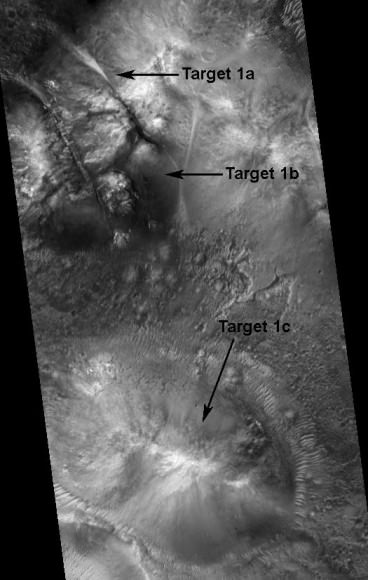
There’s a guy, and apparently a team of “remote viewing experts” who have found what they believe is a massive industrial complex on Mars. Eric Berger at his SciGuy blog at the Houston Chronicle wrote about this today, and it is just way too wacky to believe, kind of like the people who zoom in on rocks on Mars and say they see Bigfoot. Anyway, these folks say they can even tell that there are artificial structures at this site with a laboratory. What’s more they can see that there are lifeforms there wearing uniforms, and there are more men than women. Yep.
Water Cycle on the Moon Remains a Mystery
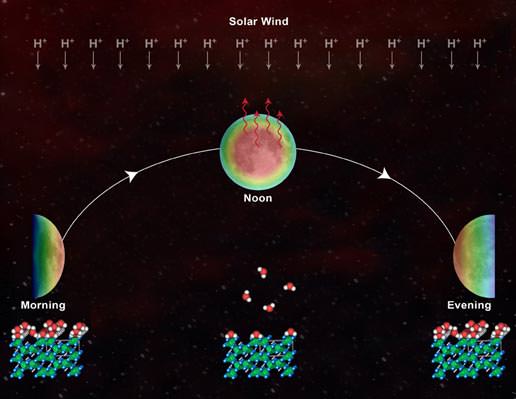
[/caption]
“Water cycle on the Moon” is a phrase that many people – including lunar scientists – were never expecting to hear. This surprising new finding of ubiquitous water on the surface of the Moon, revealed and confirmed by three different spacecraft last year, has been one of the main topics of recent discussion and study by lunar researchers. But figuring out the cycle of how water appears and disappears over the lunar day remains elusive. As of now, scientists suspect a few different processes that could be delivering water and hydroxyl (OH) to the lunar surface: meteorites or comets hitting the Moon, outgassing from the Moon’s interior, or the solar wind interacting with the lunar regolith. But so far, none of the details of any of these processes are adding up.
Dana Hurley from The Johns Hopkins University Applied Physics Laboratory is part of team of scientists attempting to model the lunar water cycle, and she discussed the work at the NASA Lunar Science Institute’s third annual Lunar Forum at Ames Research Center, July 20-22, 2010.
“When we do the model, we assume the way that the water is lost is through photodissociation, and so that sets the timescale,” Hurley told Universe Today. “And using that timescale the amount that is coming in through the solar wind or micrometeorites can’t add up to the amount observed if it is in steady state, so something is not jiving.”
Photodissociation involves the breaking up of a substance into simpler components by the radiant energy of sunlight.
It appears the amount of water varies over the course of the lunar day. Two observations a week apart by a spectrometer on the repurposed Deep Impact spacecraft (now called EPOXI) showed the region that was near the Moon’s terminator at dawn had a detectable amount of water and hydroxyl, and a week later when it was near noon, those substances were gone. But the new region at dawn then had H2O and OH.
One theory holds that the water and hydroxyl are, in part, formed from hydrogen ions in the solar wind. By local noon, when the moon is at its warmest, some water and hydroxyl are lost. By evening, the surface cools again, and the water and hydroxyl return.
But, Hurley said, the solar wind in steady state does not reproduce the observed surface density of water and hydroxyl.
Additionally, looking at the other possible sources — the known source rate of micrometeoroids and comets — doesn’t provide the amount of observed H20 and OH either.
“We’d really like to have a lot more observations to understand how it evolves over the course of the day,” Hurley said.
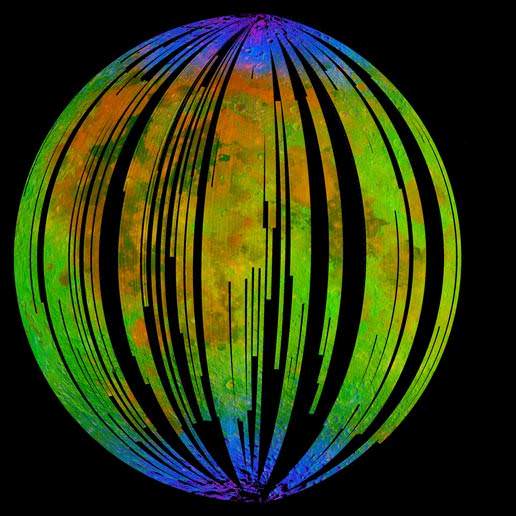
In her talk, Hurley said her team has been trying to look at all possible angles and ideas, including recent larger comet hits on the Moon, or potentially a seasonal event where water deposited at winter poles could be released when it warms up in summer. But so far none of these ideas have been tested or modeled, and as of now do not provide a solution to the daily cycle of water that was observed.
She also noted that since there are obviously some unique processes going on, the interaction between the surface and atmosphere needs more study.
“The surface and atmosphere are coupled,” Hurley said in an interview with Universe Today. “The atmosphere is produced from the surface; there is no atmosphere that lasts for a long time on the Moon and it is constantly being produced and lost. And so it is coming from the surface, either from something that is coming from the lunar regolith grains or something that is interacting with those grains, whether it is solar wind or something that is impacting. So, the surface is the source of the atmosphere and that atmosphere comes back and interacts with the surface again. And you really have to understand that whole system.”
So, what is her best guess as to the source of the water?
Hurley said there has to be some sort of recycling going on within the regolith, and perhaps a complex surface chemistry that allows the H20 and OH to exist for longer periods of time, which would better explain the surface density.
“What I’ve looked at is what could be happening in the atmosphere and how things hop around from the surface up and then back down to the surface,” she said. “The lunar regolith is rather loose, and these small particles and gases can go down within the regolith and be within the top several centimeters and work their way down and back out. So there is an exchange going on in that top layer that is kind of acting as a reservoir. That is my best guess of what is going on.”
NASA Decision Afoot in Congress?
[/caption]
The US House of Representatives are preparing to vote on H.R. 5781, their version of NASA’s $19 billion budget authorization for fiscal year 2011, and several groups are calling for a “no” vote, or at the very least, a delay in the vote, currently scheduled for Friday, July 30. The House version would cut much of the proposed money for commercial space development and game-changing technology development, while putting more money towards a NASA-built rocket. There’s a lot being written about this …
Here are some great articles/resources to check out:
Space Politics by Jeff Foust shares an email from SpaceX founder Elon Musk asking for US citizens to contact their representatives to vote no. (There are instructions there on how to contact your representative, as well).
The Planetary Society put out a press release asking for a delay in the vote until there’s been more discussion and debate.
Alan Boyle at MSNBC writes about the “Showdown Over Space Policy”
More on the inside stuff going on in Washington regarding NASA from Space News.
If you are undecided, take a look at this comparison of the House and Senate versions of the bill from The Space Foundation.
Rand Simberg from Popular Mechanics asks, “Is NASA being set up to fail again?”
Irene Klotz at Discovery Space uncovered some stealth funding for Constellation hidden in a bill regarding the war in Afghanistan.
ADDED on 7/30/2010:
Space News now reports that a vote on the NASA bill appears unlikely until September.
Here’s a pdf letter from two unions, the International Federation of Professional & Technical Employees (IFPTE) and the American Federation of Government Employees (AFGE) who both oppose the House NASA Reauthorization bill, HR 5781.

